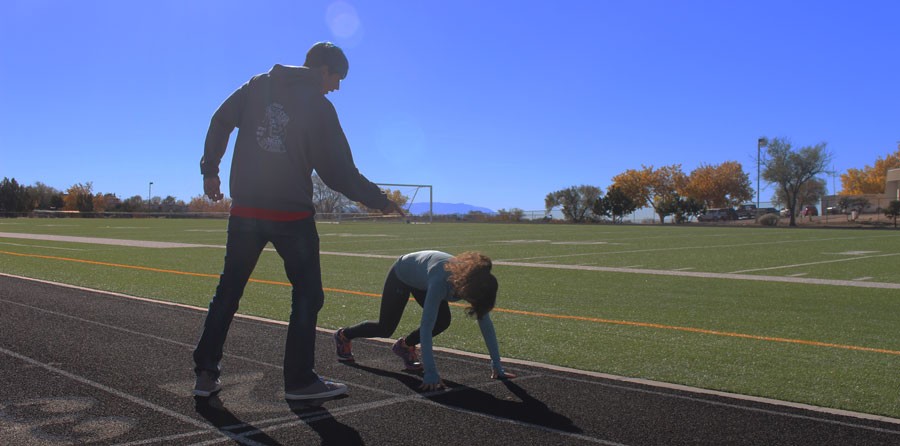Are Youth Athletes at Risk Today?
November 19, 2015
According to Stanford Children’s Health, in the United States alone, about 30 million children and teens play some form of an organized sport. But that number is now dropping.
However, in recent years there has been a significant decline in young adults participating in sports. According to The Aspen Institute, from 2008 to 2015, 3.9 percent fewer were playing basketball, 10.7 percent fewer were playing soccer, 13.7 percent fewer were in track and field, 14.4 percent fewer were in baseball, 28.6 percent fewer were in football, and 31.3 percent less were in softball.
So what causes these young adults to stop playing sports?
Too much pressure
Danielle Braff, writing in the Chicago Tribune, says, “When parents push sports, kids often lose….Youth sports long have been seen as a ticket to a college scholarship, and as college costs get higher, parents may be putting more pressure on their children to shag some of that cash.”
Jason Sacks, executive director of the Positive Coaching Alliance, states, “It’s become a win-at-all-costs culture.” He also states that 70 percent of young adults drop out of sports by age 13. And one of the main reasons is because parents and coaches put too much pressure on them.
In a 2014 study published by the Journal of Physical Activity & Health, researchers interviewed young adult soccer players and found that winning was less important than having fun, and that having fun is the primary reason young adults choose to participate in organized sports.
According to healthychildren.org, young athletes should not be treated like adult athletes. They should not be placed in a significant or intense win-loss situation until they are confident that their worth is not based on the outcome of the athletic activity.
They should also not be overworked physically. They can’t be expected to run two miles in under ten minutes or do endless drills. According to University of Rochester Medical Center, the most common type of sports injury is an overuse injury such as a stress fracture: “Playing sports year-round without time off doesn’t give young bodies much chance to rest and recover.”
Injuries are common
USA Today reports that over 1.35 million children had sports injuries severe enough to send them to a hospital emergency room. The most common injuries are head (14 percent), face (7 percent), fingers (12 percent), knees (9 percent), and ankles (15 percent).
In 2014, in the United States, the most common diagnoses seen in ERs for sports injuries are, in order of frequency, strains or sprains, fractures, contusions, concussions, unspecified injuries, lacerations and dislocations.
Concussions are the most common, especially in football. A concussion is defined as a bump, blow, or jolt to the head that causes a traumatic brain injury.
Overtraining and other dangers
Ever heard of overtraining syndrome? Overtraining syndrome is when athletes experience a worsening performance, despite intense training. They can experience chronic or muscle joint pain, fatigue, personality or mood changes, sleep changes and increased injuries, according to childrenscolorado.org.
And there are other dangers. Track star Arielle Newman died suddenly at 17 in April 2009 from absorbing lethal levels of methyl salicylate, which helps with temporary relief of muscle aches and pain. Claims have been made that Arielle was using methyl to help with sore muscles and sore joints, which are typical aches and pains for an athlete. (Methyl salicylate is found in creams such as BenGay, Icy Hot and Tiger Balm.)
Dr. Thomas Kearney, director of a poison control center and professor of pharmacy at the University of California in San Francisco, states, “Topical application of methyl salicylate can be hazardous if it is smeared over 40 percent of the body, if someone has a skin condition or if another medication interacts negatively with the products.”
A coach’s perspective
More locally, Santa Fe High’s JV girls’ soccer coach Richard Koesterer gave us an inside look on athlete injuries. “As an athlete, every time I was injured I was desperate to recover and get back into the game. As a coach, I see players wanting to do the same. They often injure themselves and try to return to playing to quickly and cause more damage.”
As a coach, he controls his players’ practicing time. We asked him if he thinks that high school athletes are being pushed too far in training. “I think some high school athletes are being pushed too far in training,” he said. “I think players and their parents have high expectations and some players will work tirelessly to try and meet those expectations. I think this can lead to overuse injuries. I also think that players that only focus on one sport or activity are much more likely to be injured than players that play a variety of sports or have a variety of interests outside of sports.”
When asked the appropriate training time for athletes, he states, “I would say two hours per day in season combined with offseason training and conditioning. I would also encourage my players to play a variety of other sports, even if they are not good at them, just to stay active and maintain a healthy lifestyle.”
Times have changed when it comes to sports and the intensity of them. When asked how athletes could be more prone to injuries then athletes ten years ago he says, “I think ten years ago, players had a wider range of activates and had a slightly more active lifestyle. This is what made them less prone to injuries.”
So, a little advice to athletes: Take some time to relax. Don’t lift those 50-pound weights at practice every day, maybe do some stretching or go for a jog. Health is more important in the long run.
